IOCCG news bulletins include items of interest from the IOCCG, its sponsoring agencies, as well as the broader ocean colour community (including new publications). Please let us know if there are any other items of interest you would like to see included in the next IOCCG news bulletin (contact Raisha Lovindeer). You can also follow IOCCG on Twitter.
IOCCG News
Venetia Stuart Retires from the IOCCG Project Office
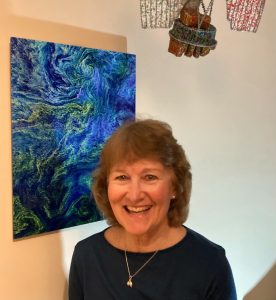 Dr. Venetia Stuart has been the welcoming face of IOCCG for over 25 years, acting as Executive Scientist and IOCCG Project Coordinator. She has been the glue that held the Group together, tirelessly working behind the scenes. Her work in optical oceanography focussed on pigments and the bio-optical characteristics of phytoplankton, and she joined the IOCCG in 1997. Venetia was pivotal in steering the IOCCG to being considered a role model of international scientific cooperation. In addition, she has authored & co-authored over 60 publications, is the series editor of IOCCG Scientific Reports 1 to 20, and has led the planning and execution of countless meetings and training courses, including the International Ocean Colour Science (IOCS) meetings.
Dr. Venetia Stuart has been the welcoming face of IOCCG for over 25 years, acting as Executive Scientist and IOCCG Project Coordinator. She has been the glue that held the Group together, tirelessly working behind the scenes. Her work in optical oceanography focussed on pigments and the bio-optical characteristics of phytoplankton, and she joined the IOCCG in 1997. Venetia was pivotal in steering the IOCCG to being considered a role model of international scientific cooperation. In addition, she has authored & co-authored over 60 publications, is the series editor of IOCCG Scientific Reports 1 to 20, and has led the planning and execution of countless meetings and training courses, including the International Ocean Colour Science (IOCS) meetings.
Venetia retired from the Project Office in January. The IOCCG members and ocean colour community deeply thank her for her dedicated service to the members and the community; for her professionalism, patience, and effectiveness; and for her invaluable contribution to the field of ocean colour science.
Congratulations Venetia! We wish you all the very best on your retirement.
2022 Call for IOCS-2023 Breakout Workshop Chairs & Associated Training Courses
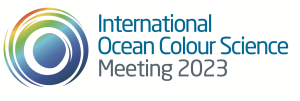 An open call for proposals to chair Breakout Workshops (BW) and to conduct associated training at the 5th International Ocean Colour Science meeting (IOCS-2023) was issued in December 2022. IOCS-2023 is scheduled for 14-17 November 2023 in St. Petersburg, FL, USA, with 13 November 2023 reserved for associated training courses and side meetings. Proposals for Breakout Workshops and notices of intent for training courses should be submitted by 1 March 2023.
An open call for proposals to chair Breakout Workshops (BW) and to conduct associated training at the 5th International Ocean Colour Science meeting (IOCS-2023) was issued in December 2022. IOCS-2023 is scheduled for 14-17 November 2023 in St. Petersburg, FL, USA, with 13 November 2023 reserved for associated training courses and side meetings. Proposals for Breakout Workshops and notices of intent for training courses should be submitted by 1 March 2023.
The theme for IOCS-2023 is Impact and Value of Ocean Colour Observations in a Changing World: Water in all its Colours. The Scientific Committee has proposed the following general themes for the breakout workshops:
- New and emerging technologies: this includes new technologies related to observational platforms, sensors, algorithms, capabilities, and in-situ measurements.
- Cool new ways of examining ecosystem function and change from ocean colour, including carbon from space.
- Societal value and Impacts of ocean colour, including economic valuations, linkages with other essential climate variables, value to industries, and impacts on sectors including fisheries, aquaculture, and coastal and marine pollution.
Potential BW chairs are invited to submit a brief proposal with a specific topic within one of the above themes, highlighting the scope and goals of the BW, and the proposed structure of the session. Click here to read the full description of requirements and how to submit your proposal on the IOCS website. Expressions of interest for associated training courses should be directed to Raisha Lovindeer, preferably before 1 March 2023.
News from NASA
NASA PACE Mission Update
The NASA PACE mission has entered its year-of-launch! All mission elements are running full throttle to ready themselves for launch on January 9, 2024 from Kennedy Space Center in Florida, USA. PACE’s instruments, spacecraft, and integration and testing (I&T) teams are currently focusing on comprehensive performance assessments of the full observatory to ensure that mechanisms work properly and data flows seamlessly from the instruments to the science data processing system. In April, this ambient (room) temperature testing will conclude, including vibration and acoustics tests that simulate the launch environment, and the observatory will enter several months of thermal vacuum tests that simulate the space environment. Then, in November, the PACE observatory will begin its journey to Kennedy Space Center, where it will ultimately be integrated onto a SpaceX Falcon 9. The countdown is on!
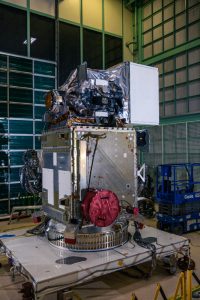 Picture of the full observatory, minus solar panels. Direction of flight is into the ground (down) and nadir view is out of the page. The Ocean Color Instrument (OCI) is sitting on top. Two polarimeters are just below OCI on the far right panel (barely visible) and are pointing out of the page.
Picture of the full observatory, minus solar panels. Direction of flight is into the ground (down) and nadir view is out of the page. The Ocean Color Instrument (OCI) is sitting on top. Two polarimeters are just below OCI on the far right panel (barely visible) and are pointing out of the page.
Keep up with the NASA Plankton, Aerosol, Cloud, ocean Ecosystem (PACE) Mission via its third quarterly Community Newsletter. To join the PACE Community of Practice, see here: https://pace.oceansciences.
Request for Proposal for NASA PACE Mission Validation Program
The Plankton, Aerosol, Cloud, ocean Ecosystem (PACE) Mission Validation Program element of ROSES solicits proposals to support the post-launch validation of PACE science data products. Validation refers to performance assessment and ‘ground-truthing’ of the science data products produced by PACE to evaluate and reduce uncertainty in these products. The primary goal for this program element is the accumulation and/or collection of in situ or other fit-for-purpose data to validate ocean color, atmospheric aerosol, and/or cloud data products from PACE’s trio of instruments.
Proposals should focus on efforts that will enable the performance assessment of PACE data products through the collection of direct and proxy measurements suitable for PACE-specific product validation and uncertainties assessments. Step-1 Proposals are due March 7, 2023, and Step-2 Proposals are due May 5, 2023. Questions concerning this solicitation may be directed to Laura Lorenzoni.
News from NOAA
First Ocean Color images from VIIRS NOAA-21
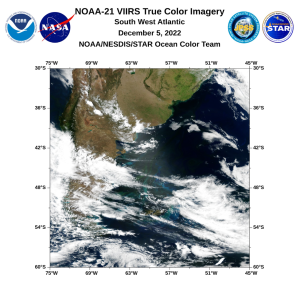 The Joint Polar Satellite System -2 (JPSS-2) satellite successfully launched from Vandenberg Space Force Base on Nov. 10 at 1:49 a.m. PST and subsequently was officially renamed NOAA-21, the 21st polar-orbiting satellite NOAA operates. The Visible Infrared Imaging Radiometer Suite (VIIRS) instrument on NOAA-21 began collecting Earth science data on December 5 over the East Coast of the United States. The data for the first full day global image was collected on December 6, 2022.
The Joint Polar Satellite System -2 (JPSS-2) satellite successfully launched from Vandenberg Space Force Base on Nov. 10 at 1:49 a.m. PST and subsequently was officially renamed NOAA-21, the 21st polar-orbiting satellite NOAA operates. The Visible Infrared Imaging Radiometer Suite (VIIRS) instrument on NOAA-21 began collecting Earth science data on December 5 over the East Coast of the United States. The data for the first full day global image was collected on December 6, 2022.
The NOAA Ocean Color Science Team began routinely generating global VIIRS NOAA-21 true color images since the first data were available. The NOAA OC team also began routinely producing global VIIRS NOAA-21 ocean color data, e.g., chlorophyll-a concentration. VIIRS NOAA-21 data, including ocean color, are available from 5 Dec. to 15 Dec. Unfortunately, data transmission ceased on 16 December 2022. From the NOAA satellite operations announcement: “During Rev #508, NOAA-21 experienced an anomaly with the KA transmitter system on board. Engineering is currently troubleshooting. There will be no Science data from the NOAA-21 spacecraft until further notice. The NOAA-20 and S-NPP Spacecrafts will continue to provide all JPSS data needs.”
As the reinstatement of VIIRS data flow is awaited, one can compare the NOAA 21 Chl-a preliminary results with those from the well-validated SNPP and NOAA-20 using the OCView tool. The NOAA Ocean Color team continues to improve product quality and looks forward to reinstating routine processing as soon as NOAA-21 VIIRS data flow is resumed. Many thanks go to the JPSS program for funding support and data access to the OC team.
NOAA OC Science Team Publications added to the IOCCG Bibliography:
- Mikelsons, K., M. Wang, E. Kwiatkowska, L. Jiang, D. Dessailly, and J.I. Gossn, “Statistical evaluation of Sentinel-3 OLCI ocean color data retrievals”, IEEE Trans. Geosci. Remote Sens., 60, 4212119 (2022). 10.1109/TGRS.2022.3226158
- Wei, J., M. Wang, K. Mikelsons, L. Jiang, S. Kratzer, Z. Lee, T. Moore, H.M. Sosik, and D. Van der Zande, “Global satellite water classification data products over oceanic, coastal, and inland waters”, Remote Sens. Environ., 282, 113233 (2022). doi:10.1016/j.rse.2022.113233
- Qi, L., C. Hu, B. B. Barnes, B. E. Lapointe, Y. Chen, Y. Xie, and M. Wang, “Climate and anthropogenic controls of seaweed expansions in the East China Sea and Yellow Sea”, Geophys. Res. Lett., 49, e2022GL098185 (2022). doi:10.1029/2022GL098185
- Qi, L., M. Wang, C. Hu, and B. Holt, “On the capacity of Sentinel-1 synthetic aperture radar in detecting floating macroalgae and other floating matter”, Remote Sens. Environ., 280, 113188 (2022). doi:10.1016/j.rse.2022.113188
- Shi, W. and M. Wang, “Biological dipole mode indices: New parameters to characterize the physical and biological processes of the Indian Ocean Dipole event”, Prog. Oceanogr., 206, 102847 (2022). doi:10.1016/j.pocean.2022.102847
Upcoming Events
NOAA CoastWatch Annual Science Meeting
The NOAA CoastWatch Annual Science Meeting will be held May 22-25, 2023 in Honolulu, HI, hosted by the OceanWatch Central Pacific Node (housed in the NOAA/NMFS Pacific Islands Fisheries Science Center) at the University of Hawaii campus. This meeting will feature Central Pacific Node stakeholders and associated research, applications development, and products tailored to meet user needs.
The Third International Operational Satellite Oceanography Symposium (OSOS-3), 12-16 June 2023, Busan South Korea
 NOAA/NESDIS/STAR and EUMETSAT are excited to welcome Korea Hydrographic and Oceanographic Agency (KHOA) as co-host of this third meeting in the Operational Satellite Oceanography Seminar series (prior meetings in 2019 and 2021). Abstract submissions have now been closed for OSOS-3 and the Scientific Programme Committee is currently at work to fill out details for a productive agenda. Registration to attend is still open and information for logistics and travel have been posted to the event website. OSOS-3 will be held in-person with limited online viewing access (not fully hybrid). Here are links to access reports on the outcomes from the inaugural OSOS in 2019 and OSOS-2 in 2021.
NOAA/NESDIS/STAR and EUMETSAT are excited to welcome Korea Hydrographic and Oceanographic Agency (KHOA) as co-host of this third meeting in the Operational Satellite Oceanography Seminar series (prior meetings in 2019 and 2021). Abstract submissions have now been closed for OSOS-3 and the Scientific Programme Committee is currently at work to fill out details for a productive agenda. Registration to attend is still open and information for logistics and travel have been posted to the event website. OSOS-3 will be held in-person with limited online viewing access (not fully hybrid). Here are links to access reports on the outcomes from the inaugural OSOS in 2019 and OSOS-2 in 2021.
Optica’s (formerly, OSA) 2023 Hyperspectral/Multispectral Imaging and Sounding of the Environment (HISE) Meeting
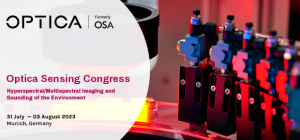 The 2023 Hyperspectral/ Multispectral Imaging and Sounding of the Environment (HISE) meeting will take place from 31 July – 03 August 2023 in Munich, Germany.
The 2023 Hyperspectral/ Multispectral Imaging and Sounding of the Environment (HISE) meeting will take place from 31 July – 03 August 2023 in Munich, Germany.
The meeting brings together researchers and industry leaders in the field of hyperspectral and multispectral remote sensing of terrestrial, coastal, oceanic, and atmospheric phenomena and industrial processes. The meeting will be held in a hybrid format, consisting of virtual and in-person presentations (in-person attendance is highly encouraged).
This year’s meeting will feature a special panel discussion involving representatives from multiple recently and soon-to-be-launched space missions. Abstract submissions are now open. The deadline for submitting an abstract and summary paper is 28 March 2023.
See linked flyer for details, and read more about the meeting and the topic categories at http://www.optica.org/HISE.
Trevor Platt Science Foundation (TPSF) Symposium
Trevor Platt Science Foundation (TPSF) and partners are pleased to announce their inaugural science symposium from 9 -11 August 2023, at the Plymouth Marine Laboratory (PML), UK: Trends, Reflections, Evolution, and Visions in Ocean Research – a celebration of the scientific life of Trevor Platt.
The symposium will include keynote and invited lectures, oral and poster presentations, and networking sessions, and will be preceded by a training course in Satellite-based tools for investigating aquatic ecosystems. Abstracts are invited for talks or posters on the themes listed below. Applications are also still being accepted for the in-person component of the training course: The deadline for abstracts and training course applications is 13 February 2023.
Research themes for the symposium:
- Primary production, physiology and ecology of marine phytoplankton
- Thermodynamics of aquatic ecosystems
- Physical and biological interactions
- Marine optics
- Size structure of marine communities
- Remote sensing of ocean colour
- Ocean carbon cycle and climate change
- Water quality and human health
- Time series of ocean observations and their analyses
- Ecological approaches to fisheries management
- International collaboration and capacity building
Click here to submit an abstract. Read more about the Symposium and register here.
HYPERNETS Science Conference
 The HYPERNETS Science Conference will be held in Brussels on 21 – 23 March 2023 at the Royal Museum for Central Africa, Belgium. In situ radiometry for water and land surfaces has evolved significantly over the last 10 years, particularly driven by the needs of satellite validation. The H2020/HYPERNETS project consortium (www.hypernets.eu) invites scientists and experts to share the latest results from their on-going research and ideas on the following topics:
The HYPERNETS Science Conference will be held in Brussels on 21 – 23 March 2023 at the Royal Museum for Central Africa, Belgium. In situ radiometry for water and land surfaces has evolved significantly over the last 10 years, particularly driven by the needs of satellite validation. The H2020/HYPERNETS project consortium (www.hypernets.eu) invites scientists and experts to share the latest results from their on-going research and ideas on the following topics:
- In situ measurement of water and/or land surface reflectance
- Calibration and Validation of optical imaging satellites, including cubesats
- In situ optical instrumentation (radiometers, cameras, sunphotometers, polarimeters, lidar, etc.)
- Automated measurement systems for remote locations
- Angular variability of water and/or land surface reflectance (BRDF/HDRF)
- In situ measurement data processing, quality control and uncertainty estimation
- Ground-based measurements of atmospheric optical properties
The deadline to submit an abstract is 25 February 2023. Click here for registration and abstract submission.
ASLO Aquatic Sciences Meeting 2023
 Members of the ocean colour community are invited to submit an abstract for sessions SS102 or SS055 of the 2023 ASLO Aquatic Sciences Meeting being held from 4 – 9 June 2023 in Palma de Mallorca, Spain. The deadline for abstract submission is 23 February 2023.
Members of the ocean colour community are invited to submit an abstract for sessions SS102 or SS055 of the 2023 ASLO Aquatic Sciences Meeting being held from 4 – 9 June 2023 in Palma de Mallorca, Spain. The deadline for abstract submission is 23 February 2023.
Session SS102: Inland and Coastal Aquatic Ecosystems Monitoring from In Situ and Satellite Radiometric Measurements focuses on monitoring coastal and inland waters ecosystems to understand ecosystem functioning, ensure sustainable practices, and assess the impact of human activities. The session is open to all contributions presenting novel applications of inland and coastal aquatic monitoring based on visible and NIR radiometric remote sensing data either from satellite or in situ sensors.
SS055 Remote Sensing of Freshwaters Health from Local to Global Scales Under Climate Change focuses on understanding the long-term effects and the complex responses of lakes and inland waters in a changing environment. The session is open to contributions that have developed and/or employed remote sensing methods to investigate the effects of climatic and anthropogenic drivers on inland waters with a particular focus on their ecosystem health.
Read the full session details at the link above and submit your abstract here. Contact the session chairs for further information.
Featured Publications
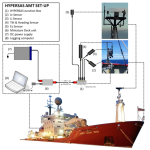 High quality radiometric measurements are required for the on-going validation of satellite ocean-colour missions. Fiducial reference measurements are in-situ data traceable to metrology standards, with associated uncertainties. This has been obtained for measurements taken on fixed platforms, most notably the AERONET-OC network. Lin et al., 2022 present a methodology used to derive the uncertainty budget for underway, above-water measurements from the Seabird Hyperspectral Surface Acquisition System deployed on an Atlantic Meridional Transect. They present theradiometric data processing with the associated uncertainties. The authors assessed different components of the uncertainty budget to indicate how the measurement procedure could be improved through reducing the principal uncertainty sources arising from variable environmental conditions.
High quality radiometric measurements are required for the on-going validation of satellite ocean-colour missions. Fiducial reference measurements are in-situ data traceable to metrology standards, with associated uncertainties. This has been obtained for measurements taken on fixed platforms, most notably the AERONET-OC network. Lin et al., 2022 present a methodology used to derive the uncertainty budget for underway, above-water measurements from the Seabird Hyperspectral Surface Acquisition System deployed on an Atlantic Meridional Transect. They present theradiometric data processing with the associated uncertainties. The authors assessed different components of the uncertainty budget to indicate how the measurement procedure could be improved through reducing the principal uncertainty sources arising from variable environmental conditions.
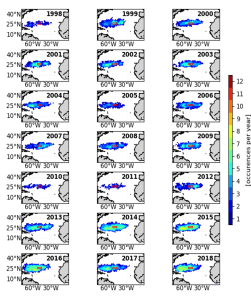 Leonelli et al. (2022) investigated the trophic regime changes in the North Atlantic Subtropical Gyre by using 21 years (1998–2018) of satellite ocean colour data (ESA OC-CCI). Previously-published articles investigated the areal increase of oligotrophic waters in the gyre by using a CHL threshold of 0.07 or 0.1 mg m-3 to define the oligotrophic regime. However, these limits do not characterize the gyre in all months, so they do not allow observing the expansion of the oligotrophic condition in the area. The current study was thus motivated to focus on the most oligotrophic waters, characterized by CHL ≤ 0.04 mg m-3. Benefitting from a much longer dataset, the authors show that these lowest CHL waters display a non-linear change pattern. There is an overall expansion in space and increase in frequency with respect to the beginning of the time series, accounting for an area growth of around 96%, and an increase of average monthly occurrences per year of 54%. Thus, the ultra-oligotrophic regime that initially appears as an infrequent condition with a restricted spatial expansion and low annual average pixel-wise occurrences, covers a wider area in the core of the North Atlantic Subtropical Gyre and occurs for half of the year on average by the end of the time series.
Leonelli et al. (2022) investigated the trophic regime changes in the North Atlantic Subtropical Gyre by using 21 years (1998–2018) of satellite ocean colour data (ESA OC-CCI). Previously-published articles investigated the areal increase of oligotrophic waters in the gyre by using a CHL threshold of 0.07 or 0.1 mg m-3 to define the oligotrophic regime. However, these limits do not characterize the gyre in all months, so they do not allow observing the expansion of the oligotrophic condition in the area. The current study was thus motivated to focus on the most oligotrophic waters, characterized by CHL ≤ 0.04 mg m-3. Benefitting from a much longer dataset, the authors show that these lowest CHL waters display a non-linear change pattern. There is an overall expansion in space and increase in frequency with respect to the beginning of the time series, accounting for an area growth of around 96%, and an increase of average monthly occurrences per year of 54%. Thus, the ultra-oligotrophic regime that initially appears as an infrequent condition with a restricted spatial expansion and low annual average pixel-wise occurrences, covers a wider area in the core of the North Atlantic Subtropical Gyre and occurs for half of the year on average by the end of the time series.
The ultra-oligotrophic expansion and prevalence tendency is found to be concurrent with a marked increase of SST, but also associated with a deepening of the MLD. These results point to a role of ocean warming that is more complex than the local stratification increase and vertical nutrient flux reduction in determining a sharpening of the oligotrophic conditions within the subtropical gyre.
The figure shows the geographical area characterized by the ultra-oligotrophic regime (chlorophyll-a ≤ 0.04 mg m-3) for 1998–2018 in the North Atlantic Subtropical Gyre. The average number of months per year when this condition is verified is depicted as pixel colour. The red box indicates the largest box having non-null occurrences during all years.
Mikelsons, et al. (2022) employ a statistical method to evaluate the performance of the Sentinel-3 Ocean and Land Colour Instrument (OLCI) global ocean color data relying on the temporal stability of the retrievals. Results show that, under most conditions, both NOAA-MSL12 and EUMETSAT-IPF-OL-2 data processing systems produce statistically consistent ocean color products in the open ocean with respect to all corresponding parameters analyzed but with some underestimates of ρwN(λ) spectra by EUMETSAT retrievals in moderate sun glint conditions being the notable exception.
The figure shows dependence of median Δ Chl-a on (a) sample number across the swath, (b) solar-zenith angle, (c) wind speed, and (d) QA score (see full figure and description in the paper, Fig. 9)
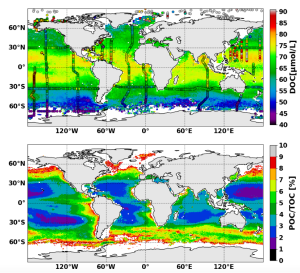 Bonelli et al. (2022) have developed an Artificial Neural Network (ANN) algorithm aiming at estimating Dissolved Organic Carbon (DOC) over open ocean waters from satellite ocean color remote sensing. Due to the different sources, sinks, and kinetics of DOC and its colored part (acdom), this latter parameter cannot be used, by itself, to estimate DOC over open ocean waters (in contrast to coastal waters). For that purpose, the present algorithm accounts for optical water classes, sea surface temperature, mixed layer depth, acdom(443), chlorophyll-a concentration, and very importantly different time steps depending on the input parameter. This is the first time that the temporal dimension is introduced in the inversion process of an ocean color derived parameter. The estimated DOC showed good correlation with in situ observations (MAPD = 7.04%), and former models (Roshan and DeVries, 2017; MAPD = 9.93%), and accurately recovers the DOC temporal variability. Combining this model with POC, allows for the first time to estimate the contribution of POC to TOC over the global ocean, showing a mean value of about 4.57 ± 1.87%.
Bonelli et al. (2022) have developed an Artificial Neural Network (ANN) algorithm aiming at estimating Dissolved Organic Carbon (DOC) over open ocean waters from satellite ocean color remote sensing. Due to the different sources, sinks, and kinetics of DOC and its colored part (acdom), this latter parameter cannot be used, by itself, to estimate DOC over open ocean waters (in contrast to coastal waters). For that purpose, the present algorithm accounts for optical water classes, sea surface temperature, mixed layer depth, acdom(443), chlorophyll-a concentration, and very importantly different time steps depending on the input parameter. This is the first time that the temporal dimension is introduced in the inversion process of an ocean color derived parameter. The estimated DOC showed good correlation with in situ observations (MAPD = 7.04%), and former models (Roshan and DeVries, 2017; MAPD = 9.93%), and accurately recovers the DOC temporal variability. Combining this model with POC, allows for the first time to estimate the contribution of POC to TOC over the global ocean, showing a mean value of about 4.57 ± 1.87%.
The figure shows the 10-year (2002–2012) average DOC concentration estimated from the DOC-ANNs model in the top panel (colored dots represent the location of the in-situ DOC data). The bottom panel shows global average map of the relative contribution of POC to TOC produced from 8-day composite data from 2002 to 2012, with a spatial resolution of 25 km.
Employment Opportunities
Several new research and employment positions have been added to Employment Opportunities section on the IOCCG website including:
- Marine Biology PhD opportunity – remote sensing of coastal and in-land waters, Stockholm University, Sweden
- Researcher Positions, Scripps Institute of Oceanography, UCSD, San Diego, USA
- 2 Positions (Research Scientist and Research Engineer), Institute of Marine Sciences (ISMAR) of the Italian National Research Council (CNR), Rome, Italy
- 2 Positions (Postdoctoral Research Associate and Research Technician), Center for Discovery and Innovation, CCNY/LDEO, New York City, NY, USA
- Postdoctoral Research in Ocean Color Remote Sensing for Corals & Seagrass, Khalifa University of Science and Technology, Abu Dhabi, UAE
- 2 Tenure Track Assistant Professor of Oceanography Positions, The University of Rhode Island Graduate School of Oceanography, Rhode Island, USA
- DPhil project in marine biogeochemistry and bio-optics, University of Oxford, UK
- Postdoctoral Researcher in Marine Optics and Biogeochemistry, Oxford University, UK
- Graduate Research Assistantships in Environmental Science, Tzortziou Bio-Optics Lab, Center for Discovery and Innovation, New York City, USA
- PhD position in remote sensing and bio-optics of coastal/estuarine waters, Louisiana State University, USA
Click here For more information on these and other positions.
If you would like to include a position on this page, please contact Raisha Lovindeer.


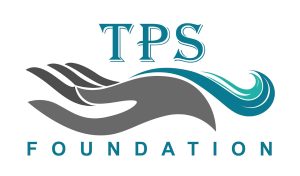
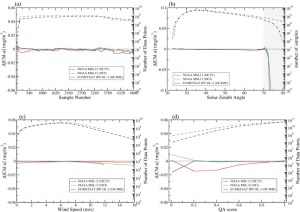
 The sixth International Ocean Colour Science (IOCS) meeting will take place in Darmstadt, Germany from 1 – 4 December 2025, hosted by EUMETSAT and ESA with support from other agencies.
The sixth International Ocean Colour Science (IOCS) meeting will take place in Darmstadt, Germany from 1 – 4 December 2025, hosted by EUMETSAT and ESA with support from other agencies.